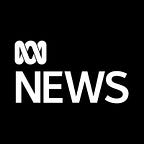Explained: Why Muslim women wear a burka, niqab or hijab
By James Vyver
It has been called a security risk and a “flag of fundamentalism”, there have been calls to ban it and it has been associated with terrorism.
So what exactly is the burka? And why do some Muslim women wear it?
Raihan Ismail is a lecturer in Middle East Politics and Islamic Studies at the Australian National University.
Dr Ismail answers some common questions about the burka.
Why do some Muslim women wear burkas?
The Koran calls for both men and women to ‘cover and be modest’.
As with many other religious scriptures, the reference to dress is open to interpretation and has been shaped by centuries of cultures in different nations.
“The Koran does not explicitly say you have to cover yourself in this manner,” Dr Ismail said.
“Some scholars argue that it is a religious obligation, particularly the more conservative factions within the Muslim world. There are many variations and interpretations.”
Dr Ismail is a Muslim and has been wearing her hijab since she was a child.
“I’m so comfortable wearing it that I can’t imagine myself without it. I wear it for cultural reasons, but there are many women who wear it for religious reasons.”
Is it a burka, niqab, hijab, chador or dupatta?
The use of the term burka in Australia is often confused with what is actually the niqab.
The burka covers the entire body including the whole face, with a mesh window for the woman to see out of.
The niqab covers the whole body including the face with the exception of the woman’s eyes.
“The niqab is more accurate; people rarely wear the burka in Australia,” Dr Ismail said.
“In Australia people mostly wear the hijab in lots of different styles.”
The hijab covers the hair and chest and is common among Muslim women in South East Asia.
Hijab is also a general term referring to the practice of wearing veils of all kinds.
The chador is a full-length cloak worn by many Iranian women, typically held closed at the front by the wearer’s hands or under their arms.
The dupatta is a long scarf draped across the head and shoulders, and is often accompanied by matching garments.
It is common in South Asia.
Are some Muslim women forced to wear a burka or niqab?
The Koran, the holy book of Islam, uses the term sharia to refer to the revealed guidance and directives given by Allah. Sharia is not just a set of laws, but rather an ideology that encompasses the Islamic way of life, covering topics from business transactions to food.
Find out more about what sharia involves here.
In Australia Dr Ismail said that the reasons women wear veils of all kinds vary widely and take in influences from culture, fashion as well as religion.
“Some women wear it because they strongly believe it is their religious obligation,” she said.
Dr Ismail does concede that some women may be pressured into covering themselves.
“There is a possibility that some husbands would tell their wives ‘please wear the niqab, I don’t want any other men to see you’ which is possessive,” she said.
“When it comes to that, the problem is not the niqab, it is being married to someone who is possessive and oppressive.”
Should the burka be banned?
Dr Ismail does not agree that banning the burka in Australia would solve the problem of oppression.
“By banning the burka or niqab you are preventing some women in freely practising what they believe in,” she said.
“You would probably isolate these women because they would not be able to go out.”
Muslim women do not wear a veil in front of their immediate family, which usually means a niqab or hijab is not worn at home.
What is your personal experience of wearing the hijab?
As a Muslim woman who wears the hijab, Dr Ismail has had some negative experiences in Canberra.
“Once in a while, people call me a terrorist,” she said.
“My first experience in Australia [involved] two women behind me who said, ‘They are everywhere, it’s like a disease’.
“They pushed me a little bit and started laughing; I was so heartbroken.”
Though confronting and upsetting, Dr Ismail said this kind of experience is in the minority.
“In Canberra people are so lovely; sometimes people just smile at me, and that is just so nice,” she said.
Originally published at www.abc.net.au on September 23, 2014.
